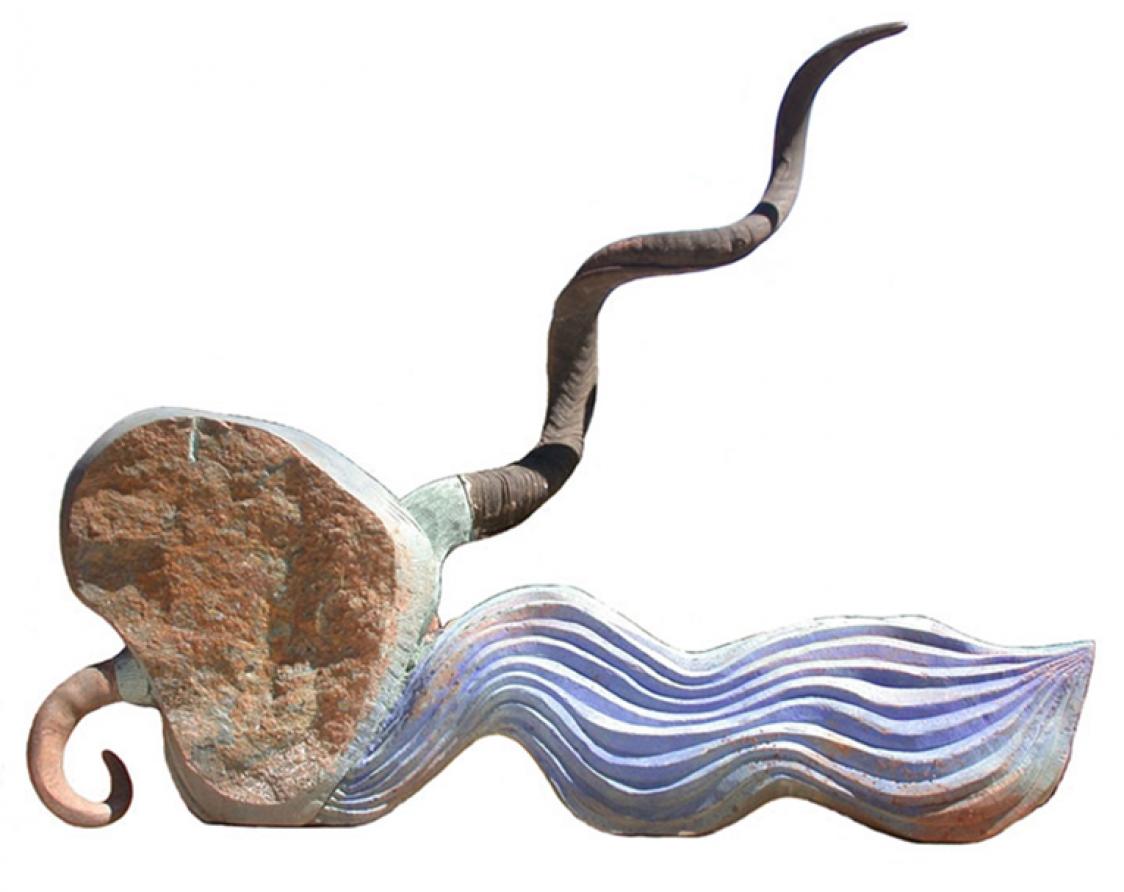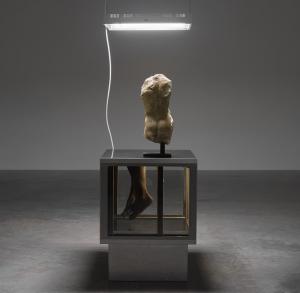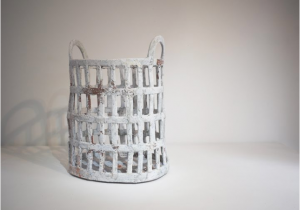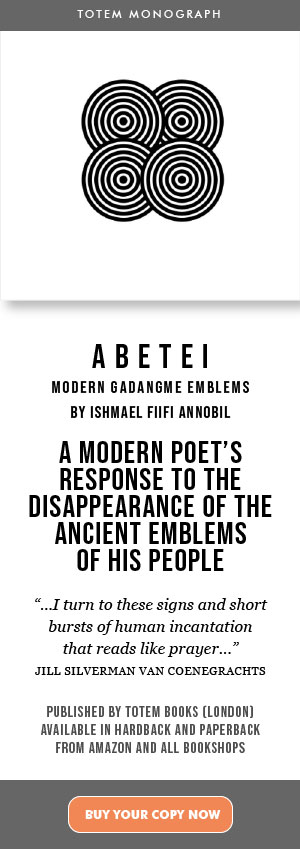THE ETHEREALITY OF SPACE : TAPFUMA GUTSA'S DESERT
Tapfuma Gutsa: Renje Sandanga (Vast Desert)
The October Gallery, London
2 March to 1 April 2006
Reviewed by Ishmael Annobil
If, while roaming the Namibian Desert or the Ogaden, I happened upon a buffalo horn strapped to a rock, I would either fear cabalistic activity in the area or accept my delirium earlier than others. That said, I might ride that delirium till I could break the cipher, and then dare the heat to obstruct my flight into the ethereal light. And if I lived to tell the tale, I am sure I would be a Tapfuma Gutsa.
The thing that first jumped at me as I strolled into the October Gallery was Lightning – a knarled kudu horn with a keen tip, trailing down into a string of pebbles (or ‘egglings’) to a fully-formed ostrich egg anchor, itself resting lambently on the ground. With this single stroke, Gutsa establishes the progenerative power of higher electricity.
Interestingly, this cleaving stroke seems reversible in essence: by their progressive, downward weight-gain, the egglings symbolise a downward gestation, but also an upward deterioration of potency. After all, their eggshell cladding is incomplete. In other words, this piece captures the magnetic relationship between the celestial and earthly spheres, while charting a downward trajectory of power.
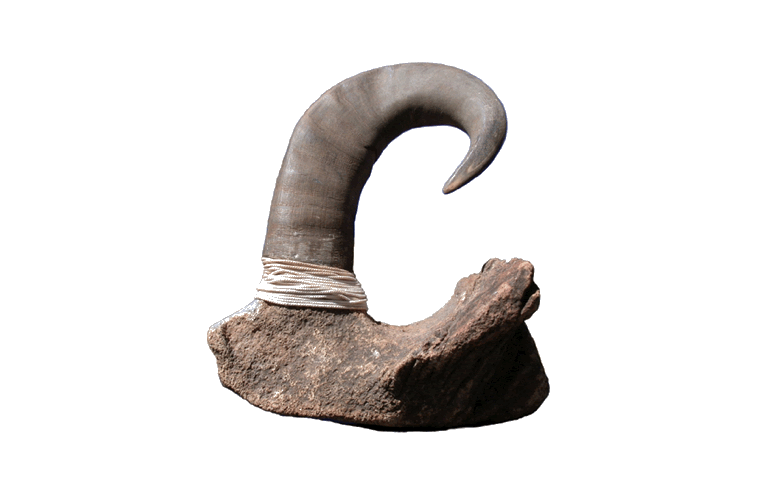
Thus established, the ethereality of man, nature, and the agency of the shaman suffuses the entire Vast Desert of this unique Zimbabwean sculptor. The history of Africa and the forced Diaspora (or otherwise) of its people become a spiritual quest; a point expressed
poignantly by the awe-inspiring Ngavara. A funerary a granite boat, Ngavara’s proud horn prow is belied by a cleft aft (two horns curling away from each other as to though the symbolise a divided aftermath), and it carries a human effigy, a thighbone of heavy game and the accoutrements of survival as well as divination. Gutsa describes this as “an epic journey that talks about the trade in slaves, goods, and artefacts”.
In that case that journey is also a purposeful journey, as if to Golgotha; a transcendental journey to undo uncertainty – life beyond death. And assuming that Ngavara’s cargo includessong, then Ancient Voyages takes up that aspect of the ‘varnishing’. This composite harp/boat sculpture elucidates in very subtle ways the pressures that befell the African musical mission. A skeletal feature braces the mid-section of this vessel’s prow, pinned into place by the colours of traffic lights (red, amber, yellow, green), denoting the artifices that have regulated that ‘songful’ journey.
For further emblematic refrain, the strings on Ancient Voyages are offset at an angle like a military formation, the first and shortest string being lax as if it were the tortured sacrificial lamb that would ultimately facilitate the breakthrough by the longer rearguard. And if Biblical certainty were also part of this journey, then Gutsa’s He Speaks Down to Us presents an elephantine effigy with a twisted trunk, which flares grandly into a basketwork megaphone. The sidelong demeanour of this being and its trunk, and the fact that its back is turned to its audience suggests the omnipotence of The Deity, and thus the need for our total obeisance. For that matter we are also called upon to lean further back into history to be realigned with the historical Exodus.
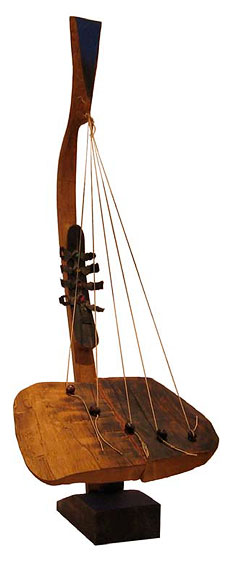 Here we encounter The Miracle of Moses, a hewn slab of stone that germinates a long horn, through a sensuous cleavage, and a prehensile mini-horn. A huge blue wave emanates gloriously from the same cleavage, beneath the proud horn, suggesting the parting of the Red Sea; so the horn suddenly seems to represent Messianic singularity: unicorn. The elemental colourings of the germinating rock and the wave testify to the light-handed genius of this artist. He seems to obey the matter before him, and so he accentuates rather than intervene.
Here we encounter The Miracle of Moses, a hewn slab of stone that germinates a long horn, through a sensuous cleavage, and a prehensile mini-horn. A huge blue wave emanates gloriously from the same cleavage, beneath the proud horn, suggesting the parting of the Red Sea; so the horn suddenly seems to represent Messianic singularity: unicorn. The elemental colourings of the germinating rock and the wave testify to the light-handed genius of this artist. He seems to obey the matter before him, and so he accentuates rather than intervene.
The putative energy of The Miracle of Moses is referenced, in a quieter way, by The Owl Piece, a shamanistic talisman vibrating with dread. It is simply a horn extending into a crusty, wizened owl-like persona with eyes of conker. A sharp quill perches on the posterior section of the owl like a dowser’s wand, or something to lance spiritual boils with, or an inscriber of fortunes, or even a poisoned checkpoint. An oracular tool certainly. Gutsa’s restrained but very aesthetic use of rope binding between the two parts of this piece is curiously touching, showing perhaps his quest to maintain a continuum between the tangible and intangible, the present and the past.
But there is some breathing space, in this narrative of gravitas, for light-hearted contemplation. It may be the poet in me, but I defer greatly to Gutsa’s Water Poem I, a piece of sweet musical irony (even counterpoint). Here a musical score has been turned on its side and superimposed with three-dimensional wooden notes, the top one being a crescent while the rest (the round ones) grow in girth in a descending order, as in Lightening. A triangular note offset to the right hints at the African contrapuntal genius, the spontaneous obligatto, the unerring key of syncopation, Jazz. The underlining message seems to be the denunciation of the written score as anti-spontaneity, and therefore spiritless invocation.
Then there is the very expressive The Embrace, a welding of the genders, whereby the male half swings an upward pointing horn phallus between the legs of its female counterpart. Hewn out of one piece of rock, the piece’s humour rests in the urgency of the male’s libidinal enquiry, which heightens at once the coyness and ecstasy of the female. The Embrace is reminiscent of a fertility masquerade that totters on the edge of the burlesque, and yet imbued with the very fearsome vulgarity of a betrayed secret. Little wonder then that curator Elisabeth Lalouschek placed The Owl Piece next to it, as if to warn the viewer against flippancy.
But the fertility idea, too, has primeval beginnings, crystallized by an absolute masterpiece, Genesis. Displayed to a side like a grotto-piece, The Genesis is a tour de force of Gutsa’s wood carving skills. It naturally reduces the embrace idea to that of patent antecedency – sometime just before the Adam and Eve myth. This embryonic piece shows intimations of a near-perfect division of two selves; its lip section is spliced and darkened for definition, suggesting a final kiss between ‘itselves’, as it hatches unwittingly and blindly out of its nebulousness. It reminds one the evolutionary writhing of the Obsidian in Kathlin Gray’s play, The Dark Lady.
For my money, Genesis is one of the most eloquent pieces of sculpture every executed and, lest I forget, John Allen, the venerable thinker, scientist, poet, avant-gardist, and synergist, calls Tapfuma Gutsa’s work “Zen in an African context”.
IMAGE CREDITS:
1. The Miracle of Moses, Tapfuma Gutsa, photo Coutesy of The October Gallery
2. Cypher, Tapfuma Gutsa, photo @ October GalleryHorn (title Unknown), Tapfuma Gutsa, courtesy of The October Gallery
3. Ancient Voyages, Tapfuma Gutsa, photo Coutesy of The October Gallery


